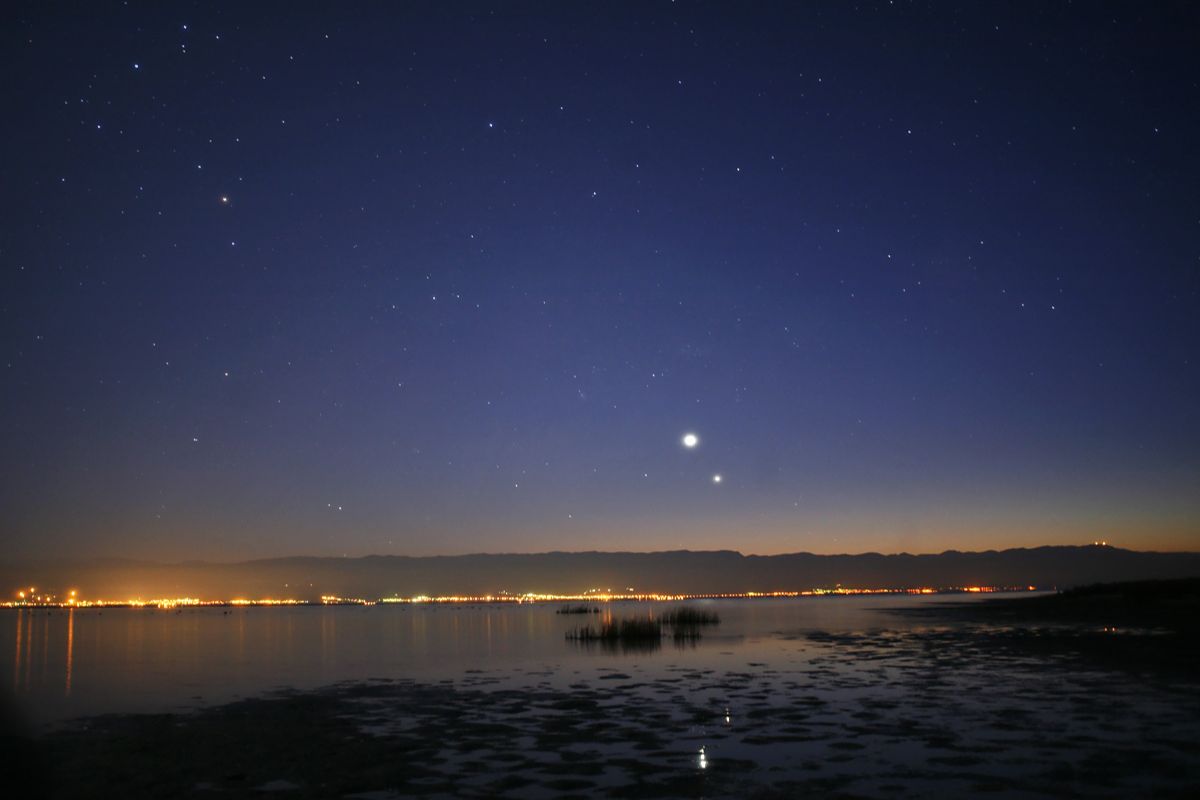
Why is Venus called the Morning Star? Venus, the second planet from the Sun, shines brightly in our sky. Known as the Morning Star, Venus gets this name because it often appears just before sunrise. Its brilliance outshines most stars, making it easily visible to the naked eye. Ancient civilizations, including the Greeks and Romans, noticed this dazzling light and associated it with their gods. Venus can also be seen in the evening, earning it the name Evening Star. Its thick atmosphere reflects sunlight, contributing to its intense glow. This celestial body has fascinated humans for centuries, inspiring myths, legends, and scientific curiosity.
What is the Morning Star?
The Morning Star is a celestial object that appears in the sky just before sunrise. Often associated with Venus, it has fascinated humans for centuries. Here are some intriguing facts about this bright object.
-
Venus is the Morning Star: Venus is often called the Morning Star because it shines brightly in the early morning sky.
-
Not a Star: Despite its name, the Morning Star is not a star but a planet.
-
Brightest Object: Venus is the third-brightest object in the sky, after the Sun and the Moon.
-
Ancient Observations: Ancient civilizations, including the Greeks and Romans, observed Venus and named it the Morning Star.
Why is Venus So Bright?
Venus's brightness is due to several factors. Its proximity to Earth and its highly reflective clouds make it shine brilliantly.
-
Reflective Clouds: Venus has thick clouds made of sulfuric acid, which reflect sunlight efficiently.
-
Close to Earth: Venus is the closest planet to Earth, contributing to its brightness.
-
Phases of Venus: Like the Moon, Venus goes through phases, which can affect its brightness.
-
Albedo Effect: Venus has a high albedo, meaning it reflects a large percentage of the sunlight that hits it.
Historical Significance of the Morning Star
The Morning Star has played a significant role in various cultures and mythologies throughout history.
-
Greek Mythology: In Greek mythology, Venus was associated with the goddess Aphrodite.
-
Roman Mythology: The Romans named Venus after their goddess of love and beauty.
-
Mayan Astronomy: The Mayans meticulously tracked Venus's movements and used it in their calendar system.
-
Babylonian Records: The Babylonians recorded Venus's appearances and disappearances in their astronomical texts.
Venus's Orbit and Rotation
Venus has some unique orbital and rotational characteristics that make it stand out in our solar system.
-
Retrograde Rotation: Venus rotates in the opposite direction to most planets in the solar system.
-
Slow Rotation: A day on Venus (one full rotation) takes about 243 Earth days.
-
Orbital Period: Venus takes about 225 Earth days to complete one orbit around the Sun.
-
Synodic Period: The time it takes for Venus to return to the same position relative to Earth and the Sun is about 584 days.
Venus in Modern Science
Modern science continues to study Venus, revealing more about this fascinating planet.
-
Space Missions: Various space missions, including NASA's Magellan and ESA's Venus Express, have studied Venus.
-
Surface Temperature: Venus has an average surface temperature of about 467°C (872°F), making it the hottest planet in our solar system.
-
Atmospheric Pressure: The atmospheric pressure on Venus is about 92 times that of Earth.
-
Volcanic Activity: Venus has numerous volcanoes, some of which may still be active.
Venus's Atmosphere
The atmosphere of Venus is thick and composed of various gases, contributing to its extreme conditions.
-
Carbon Dioxide: Venus's atmosphere is primarily composed of carbon dioxide, with clouds of sulfuric acid.
-
Greenhouse Effect: The thick atmosphere creates a runaway greenhouse effect, trapping heat and raising surface temperatures.
-
Wind Speeds: Winds in Venus's upper atmosphere can reach speeds of up to 360 km/h (224 mph).
-
No Water: Unlike Earth, Venus has no liquid water on its surface due to its extreme temperatures.
Venus and Earth: A Comparison
Despite their differences, Venus and Earth share some similarities that make Venus an interesting subject of study.
- Similar Size: Venus and Earth are often called "sister planets" because they are similar in size and composition.
The Final Word on the Morning Star
The Morning Star isn't just a bright spot in the sky. It's Venus, our closest planetary neighbor, and has fascinated humans for centuries. From ancient myths to modern science, this celestial body has played a significant role in our understanding of the universe. It's visible just before dawn, earning its name as the "Morning Star." But it's also known as the "Evening Star" when it appears after sunset. Venus is similar in size to Earth but has a toxic atmosphere and surface temperatures hot enough to melt lead. Its phases, like our Moon, were first observed by Galileo, changing our view of the cosmos. Whether you're a stargazer or a science buff, the Morning Star offers a glimpse into the wonders of our solar system. Keep looking up; you never know what you'll discover next.
Was this page helpful?
Our commitment to delivering trustworthy and engaging content is at the heart of what we do. Each fact on our site is contributed by real users like you, bringing a wealth of diverse insights and information. To ensure the highest standards of accuracy and reliability, our dedicated editors meticulously review each submission. This process guarantees that the facts we share are not only fascinating but also credible. Trust in our commitment to quality and authenticity as you explore and learn with us.
